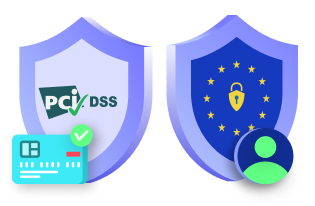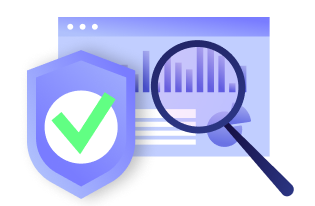Like a bridge that spans the gap between distant lands, an API bridges the chasm between programs, enabling a harmonious exchange of information. Yet, this seamless exchange comes with a critical caveat—data protection and regulatory compliance. For API developers, understanding and adhering to GDPR rules is not just a choice; it’s a necessity. In this article, we will break down complex regulations into actionable insights for GDPR compliance for API developers.
Brief overview of GDPR
The General Data Protection Regulation (GDPR) is a comprehensive data protection and privacy regulation that came into effect on May 25, 2018, within the European Union (EU) and European Economic Area (EEA). EU lawmakers regard the GDPR as the world’s most stringent privacy and security law. It was designed to strengthen individuals’ control over their personal data and enhance data protection across the EU/EEA. Although it is EU legislation, all organizations must process data related to individuals in the EU. One of the GDPR’s primary goals is to ensure a consistent level of protection across economic operators, thereby guaranteeing the free flow of personal data with a high level of legal certainty.
However, the regulation is extensive and far-reaching, which can make efforts toward GDPR compliance seem daunting and overwhelming, particularly in the realm of API development, where data flows extensively. Without a proper understanding of the law and its requirements, complying with GDPR can be challenging. To assist you in this endeavor, here are some key terminologies that will prove invaluable:
- Personal data: Information related to an individual, allowing for that individual’s direct or indirect identification. Examples of Personally Identifiable Information (PII) include names, ethnicity, religious beliefs, email or physical addresses, and digital location data such as IP addresses or web cookies.
- Data subject: The person whose data is being processed.
- Data controller: The person who manages data within an organization.
- Data processor: A third party that processes personal data on behalf of a data controller.
- Data processing: Operations that a data controller or processor performs on personal data, such as retrieval, collection, structuring, transmission, storage, profiling, deletion, alteration, and adaptation.
Why is GDPR compliance important for APIs?
The Application Programming Interface (API) is a crucial building block of network-based applications. Whether you are developing apps, microservices, or IoT solutions, software components typically exchange data through Many of your favorite apps likely rely on APIs to send or retrieve data from a server located in a data center accessible through the internet.
As APIs have become the essential bridge between data sources and applications, they enable access to sensitive software functions and data, making them a primary target for potential attackers. Therefore, APIs play a pivotal role when considering GDPR compliance, and API developers must take precautionary steps to prevent data leakage or unauthorized access to personal information.
GDPR checklist for API developers
When developing an API accessible through the internet, it is essential to consider data protection right from the beginning. Raise awareness in your organization that data privacy and protection is a guiding principle for all data collection efforts. Provide training to employees to emphasize the fundamental principles of GDPR.
Data protection by design and by default
- Identify the personal data your API processes and adopt the principle of data minimization. Avoid collecting excessive data and regularly review the data you store to ensure it remains relevant and necessary.
- Suppose you act as a data controller or processor. In that case, you must have an appropriate privacy policy and data processing agreement (DPA) detailing the technical (encryption, pseudonymization, etc.) and organizational measures for data protection.
- Be prepared to facilitate data subject rights, as mentioned before. Provide mechanisms for data subjects to submit requests related to their data.
- If your APIs deal with sensitive data or perform any processing beyond the original purpose of data collection, ensure you obtain explicit consent from the data subjects. Users must be able to give and withdraw consent freely and unambiguously.
- Develop a robust data breach response plan. Identify and mitigate potential risks, and establish procedures for reporting breaches to the appropriate authorities within the required timeframe.
Data storage location
Organizations must ensure data remains confidential at the storage layer by using data encryption mechanisms and access control measures.
Data controllers and data processors should preferably store the personal data of EU citizens on EU servers. Cloud providers like AWS or low-code SaaS providers like graphapi® allow publishing backends on data centers in the EU.
The personal data of EU citizens can be transferred to a country outside the EU when the country’s privacy laws guarantee adequate data protection. The EU Commission maintains a list of countries with the appropriate adequacy level.
Secure data transmission protocols
API developers must ensure that data remains confidential during transit by using secure communication protocols (e.g., HTTPS) to encrypt data transmission between clients and the API server.
Incorporating secure data transmission protocols into your API architecture is a must-have compliance measure and shows your dedication to building trustworthy digital experiences.
Proper data access controls
Only a limited number of people inside an organization should have manual access to personal data. So enforcing strict access controls to restrict personal data access to authorized users is one of the critical measures organizations should take.
For the API, developers should implement user authentication, authorization mechanisms, and role-based access control (RBAC) to safeguard personal data from unauthorized access and prevent data breaches. To add a layer of security and privacy, developers should consider anonymization or pseudonymizing personal data whenever possible.
Mechanisms for data portability and deletion
One of your users’ fundamental rights, in the context of the GDPR, is the “right to be forgotten.” When users request to delete all their data, you should have a simple process that allows authorized members of your organization to trigger a removal process of personal data as requested quickly.
Additionally, a data subject may request to obtain their data in a format that makes it easier to reuse in another context and transmit it to another data controller of your choosing without hindrance. In the best-case scenario, you allow users to review and download their data self-service, so you don’t have to overload your support teams with following up on requests.
Regular auditing of API activities
To make GDPR compliance a guiding principle, it makes sense to have people in an organization who take ownership and conduct regular audits of all activities around processing personal data. To make life easier for developers, creating an internal wiki page that highlights all essential measures for keeping API and other software systems that consume or process data compliant makes sense.
Additionally, development teams should add GDPR compliance to their non-functional requirements or Definition of Done (DoD) to ensure privacy by default instead of being considered a separate task or project.
Prioritize GDPR compliance for APIs
While all data protection efforts might sound like extra work initially, they can become a competitive advantage for your organization once implemented. EU corporations must ensure they only work with vendors who are GDPR compliant.
While development teams can implement all technical measures from scratch, it helps to work with cloud or API SaaS platforms that provide GDPR compliance out of the box or make it easy to implement.
To start your GDPR API development journey, check out some low-code GraphQL Tools that can significantly accelerate your API implementation roadmap.
Author bio: Jens Dressler is the founder of graphapi®, a low-code backend platform that simplifies scalable cloud infrastructure integration through an easy-to-use GraphQL API. He envisions future AI-powered LCNC platforms revolutionizing software development and empowering business professionals to collaboratively build highly scalable platforms and apps.
Disclaimer: This article is for general informational purposes only and should not be taken as legal or professional advice. The views and opinions expressed in this article are solely those of the author and do not necessarily reflect the views of our organization. We do not endorse any products or services mentioned in the article.






